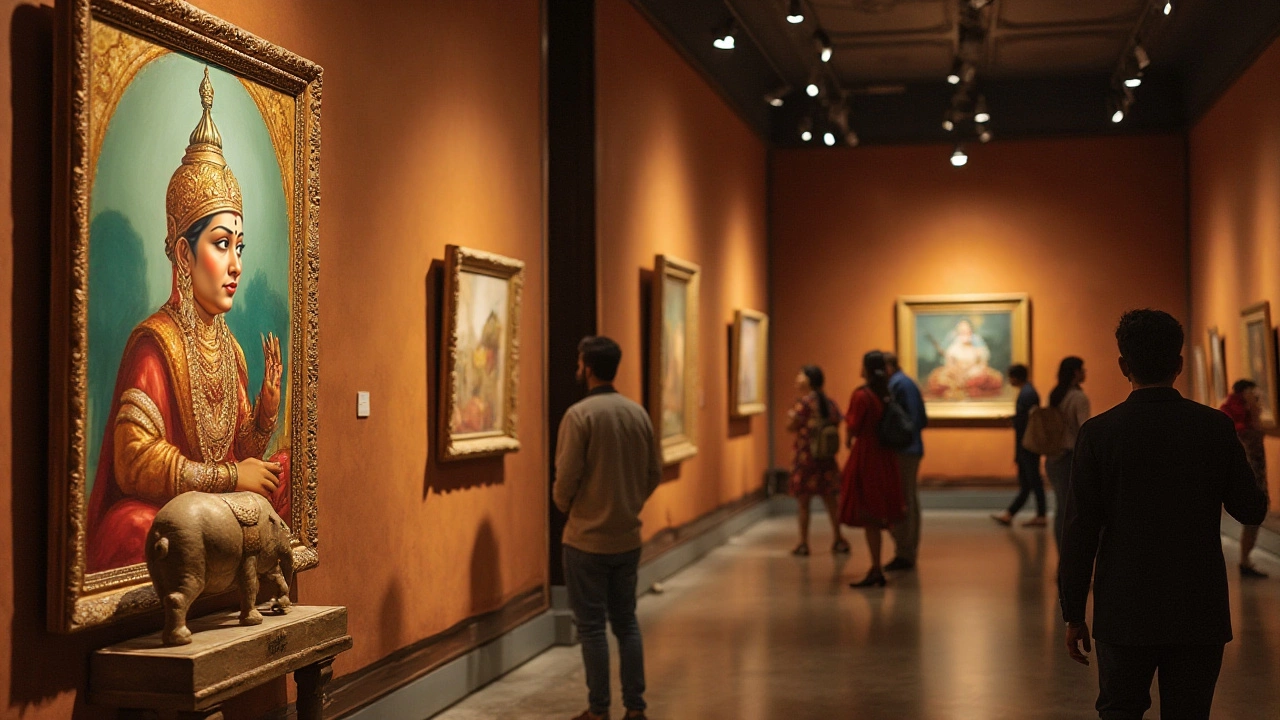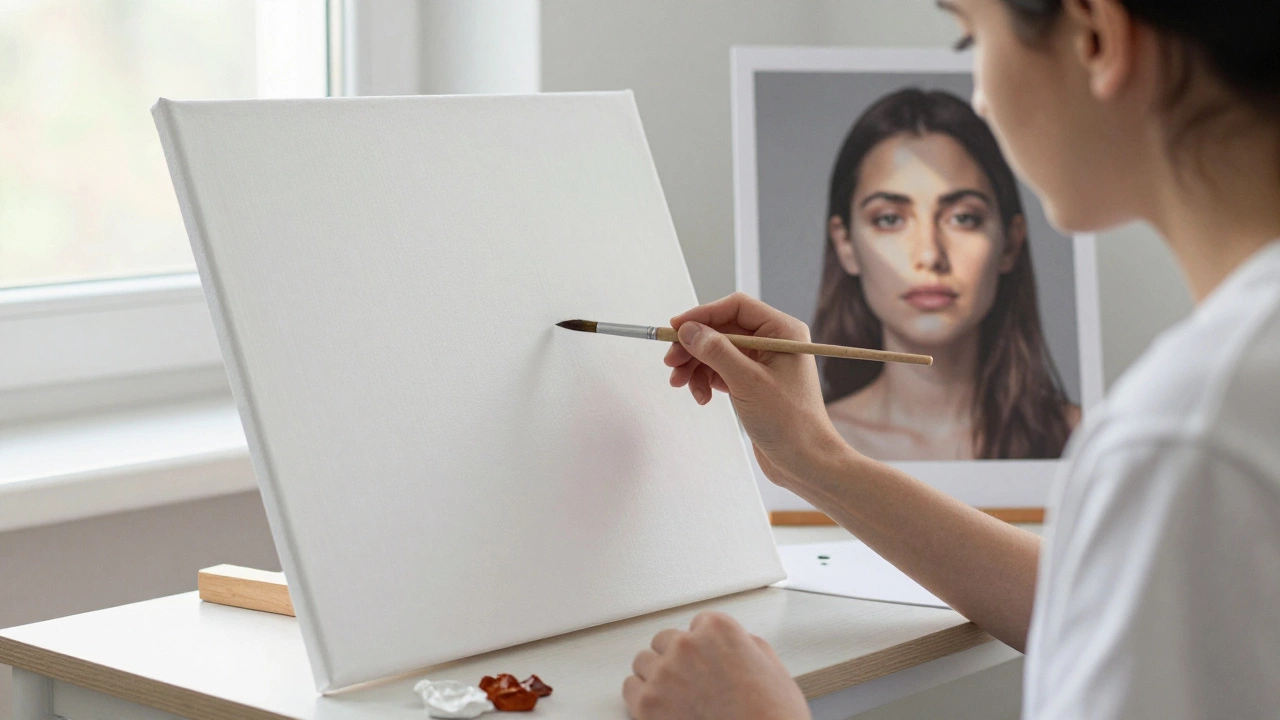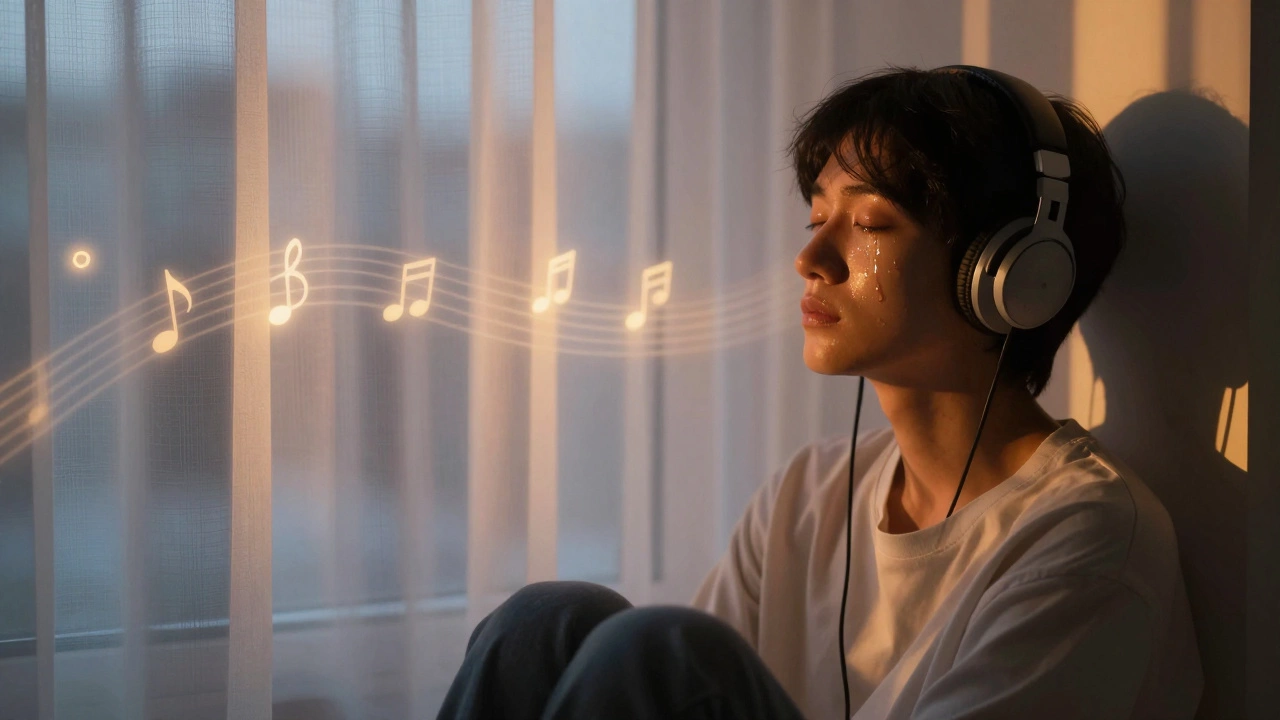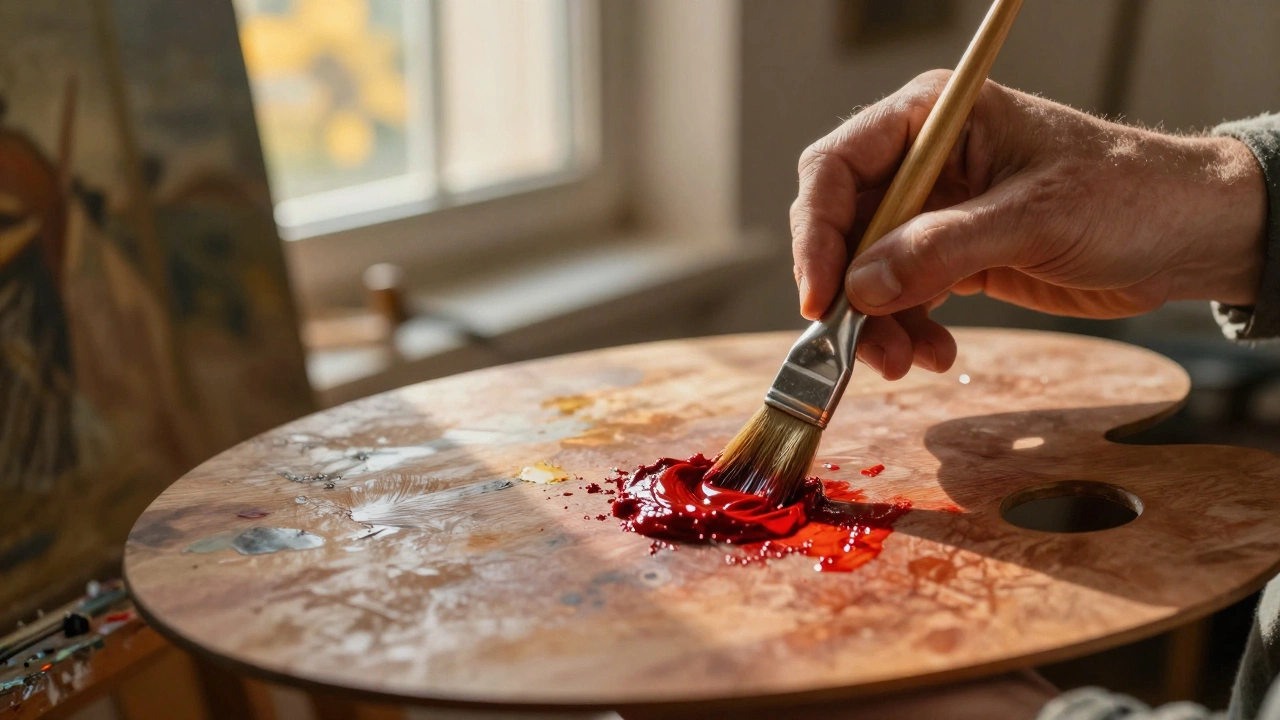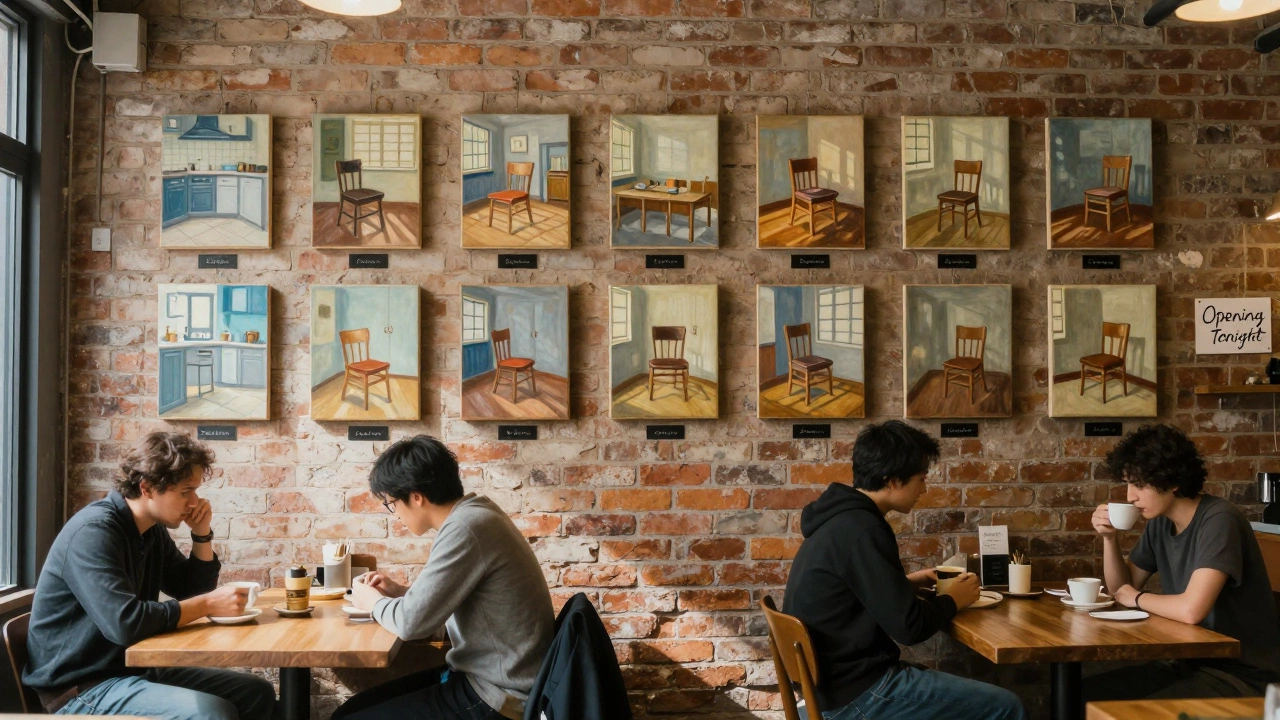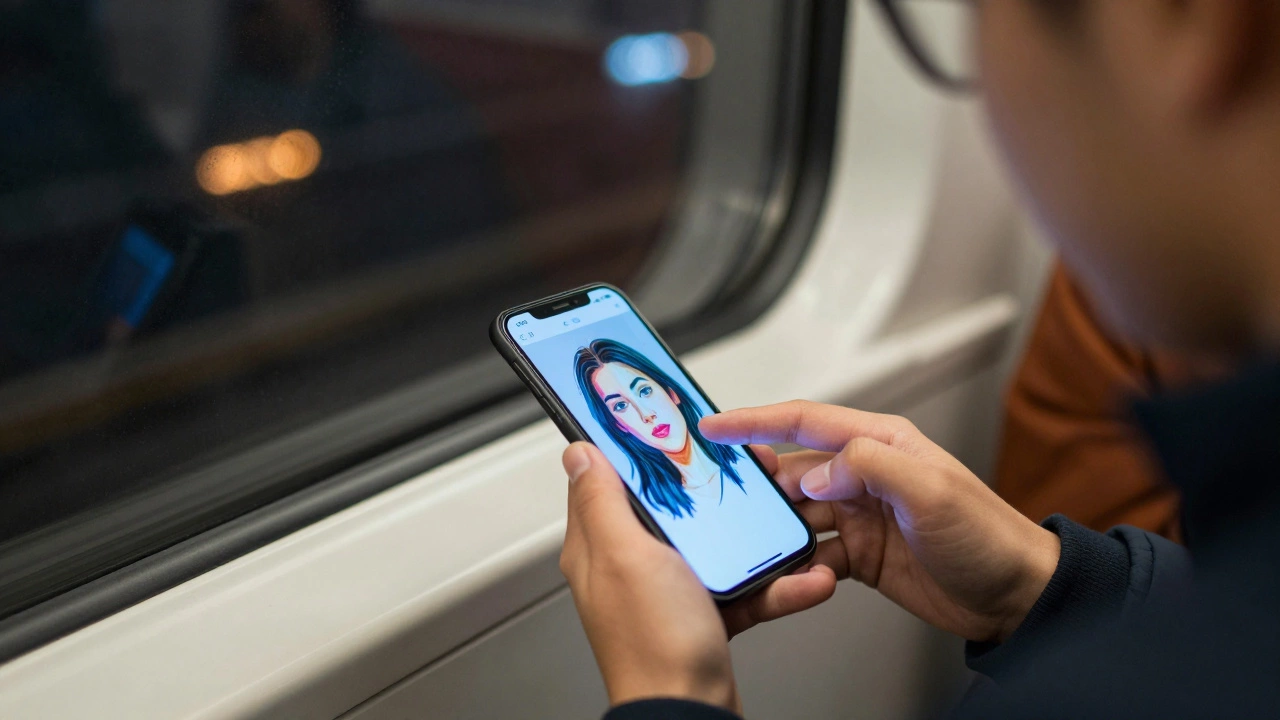The world of art is a tapestry of styles, expressions, and epoch-defining movements, often leaving even the savviest of art enthusiasts pondering the distinctions between various forms. Among the myriad categories lies the intriguing duality of fine art and contemporary art, two realms woven together by creativity yet distinct in their essence.
Fine art typically arches back centuries, enveloping traditional disciplines such as painting, sculpture, and classical drawing. It often embodies an aesthetic perfection and mastery that transcends the ages. Meanwhile, contemporary art emerges from the dynamic backdrop of modern society, daring to challenge, inspire, and engage with themes relevant to today’s world.
This exploration guides you through the defining features, vibrant evolutions, and the overlaps that create a beautiful mosaic within art spaces, shedding light on how these forms continue to shape and be shaped by the cultural narratives of our time.
- Defining Fine Art
- Characteristics of Contemporary Art
- Intersections and Influences
- Trends and Innovations in Modern Art
Defining Fine Art
Fine art stands as a monumental pillar in the history of human creativity and expression. It is typically associated with disciplines that have long been considered elevated forms of artistic practice, such as painting, sculpture, and drawing. These art forms have been esteemed for upholding rigorous standards of beauty, skill, and technique over centuries. Rooted in tradition and artistic mastery, fine art often endeavors to evoke an aesthetic experience that transcends cultural and temporal boundaries.
The heritage of fine art can be traced back to the Renaissance, a period that fostered the notion of the 'artist-genius' and celebrated figures like Leonardo da Vinci and Michelangelo. Their works, brimming with anatomical precision and divine proportion, set a precedent in the art world. As time progressed, movements such as Baroque and Romanticism introduced elements of drama and emotion, showcasing the adaptability and evolution within this category. The result is an expansive canon of works that delineate the history of visual expression.
In modern times, the definition of fine art has expanded, yet its core remains devoted to preserving and advancing the traditional artistic skills. Many institutions today, from museums to art schools, still uphold the distinctions between fine art and other forms. "Art, in itself, is an attempt to bring order out of chaos," once remarked Stephen Sondheim, encapsulating the essence that fine art seeks to convey through its structured approach to creativity.
What sets fine art apart is also its purpose. Unlike decorative arts or crafts, fine art is primarily created for its intellectual and aesthetic value rather than a functional one. As a result, considerable emphasis is placed on the conceptual underpinnings that guide the artist's work, inviting the viewer into a space of contemplation and emotion. Artists often strive to create a work that speaks volumes through its silence and whose impact is not purely visual but deeply philosophical.
A glance at the galleries dedicated to fine art reveals a rich interplay of themes and concepts ranging from the religious and mythological to the personal and political. These works often reflect the society from which they stem, yet maintain a timeless quality, enabling them to resonate across ages. The market for fine art remains robust, driven by collectors and patrons who understand the historical significance and investment potential of these masterpieces.
While the world has progressively embraced new media and techniques within contemporary circles, the intricate brushwork, commanding compositions, and emotive power of fine art continue to captivate audiences globally. As the art world evolves, fine art will likely remain as a testament to the enduring appeal of classical artistry, providing an enriching contrast against the backdrop of ever-changing contemporary currents. In this way, fine art upholds its timeless status, ever relevant and never confined, thriving in an unending dialogue with the past, present, and future of artistic endeavor.
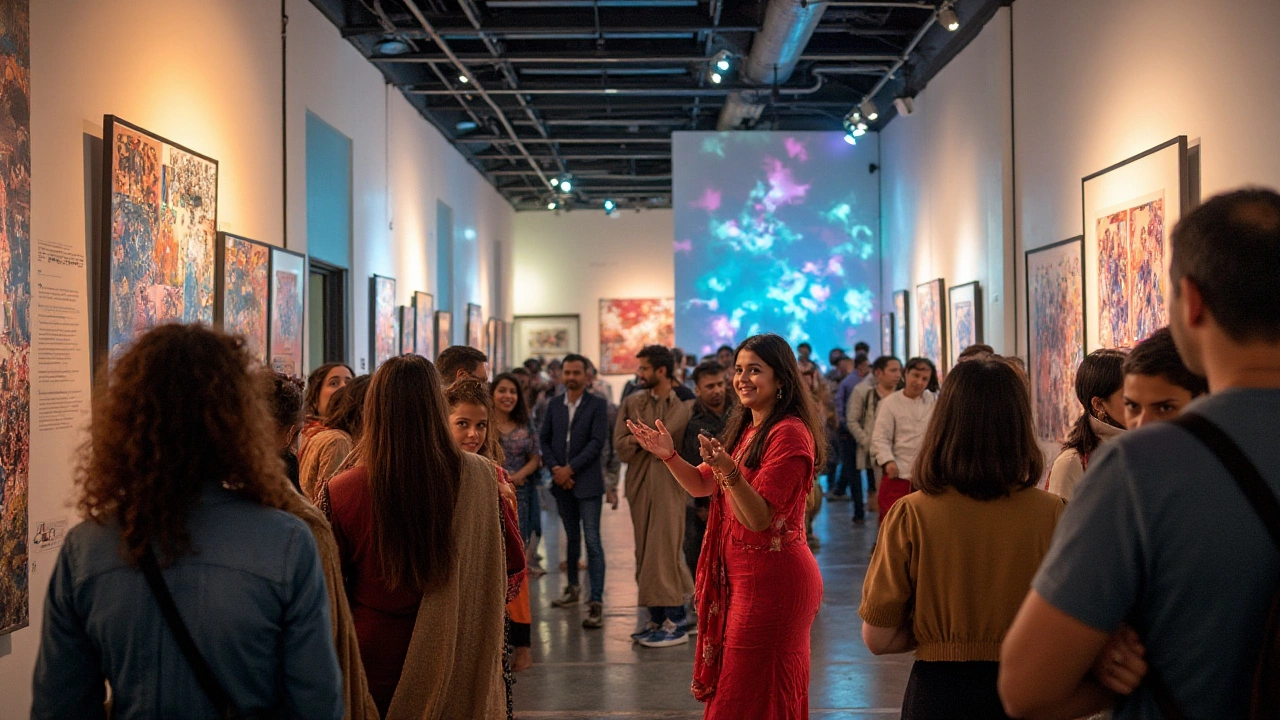
Characteristics of Contemporary Art
Contemporary art is often described as a mirror reflecting the complex landscape of our current world, with a profound emphasis on society, politics, identity, and culture. Unlike fine art, which leans towards traditional techniques and timeless beauty, contemporary art embraces the avant-garde in both thought and execution. It frequently employs unexpected media, ranging from digital installations to performance art, challenging the very notion of what art should embody. With roots planted in the late 20th century, contemporary art processes have evolved in sync with technological advancements and social changes, offering both artists and audiences a diverse canvas rich with potential and innovation.
The diversity of contemporary art is expansive. This art form celebrates breaking down boundaries, merging disciplines and materials, and introducing new perspectives on conventional wisdom. From embracing digital tools to questioning norms through mixed media, contemporary artists are often seen as pioneers exploring uncharted territories. The democratization of art through social media has also played a crucial role, making it both more accessible and more inclusive, inviting voices across the globe to contribute to the ongoing dialogue. This inclusivity signifies a shift from exclusivity to a more participatory form of expression.
Unlike the rigid canon of fine art history, contemporary art often interrogates and critiques societal issues such as gender, race, and cultural hegemony. Artists like Banksy use their works to address political themes with satire and irony, whereas others, like Yayoi Kusama, dive into the introspective exploration of self and infinity. It’s an art form deeply rooted in its time, attentive to the slightest shifts in the global tapestry. In doing so, it seeks not only to depict reality but to engage actively with the viewer, encouraging dialogue and reflection.
"Art is not a mirror held up to reality but a hammer with which to shape it." – Bertolt Brecht
This quote encapsulates the activist spirit that often pervades contemporary art, making it a powerful vessel for change. Unlike the solemnity often associated with traditional gallery spaces, contemporary art exhibitions are alive with interaction. Visitors are not passive observers; they are participants in experiential storytelling. The participatory nature of some pieces, such as those by Ai Weiwei, incorporate the public’s voice into the piece itself, blurring the lines between creation and critique.
Another intriguing facet of contemporary art is its fluid definition, as it constantly reinvents itself in response to emerging contexts. It encompasses an array of styles and movements, from the conceptual challenges of postmodernism to the immersive reality of new media. This flexibility is one of its defining features, offering artists unfettered exploration of ideas and mediums. With growing concerns over global issues like climate change, sustainable art practices are gaining traction, demonstrating the art world's responsiveness to global challenges.
The accessibility and immediacy of contemporary art make it an ever-changing field that reflects the pulse of society. Through its dynamic and responsive nature, it challenges both creators and audiences to rethink societal roles. Often provocative, sometimes entertaining, contemporary art continues to adapt in a rapidly transforming world, making it perhaps the most exciting chapter in the ongoing story of human expression.
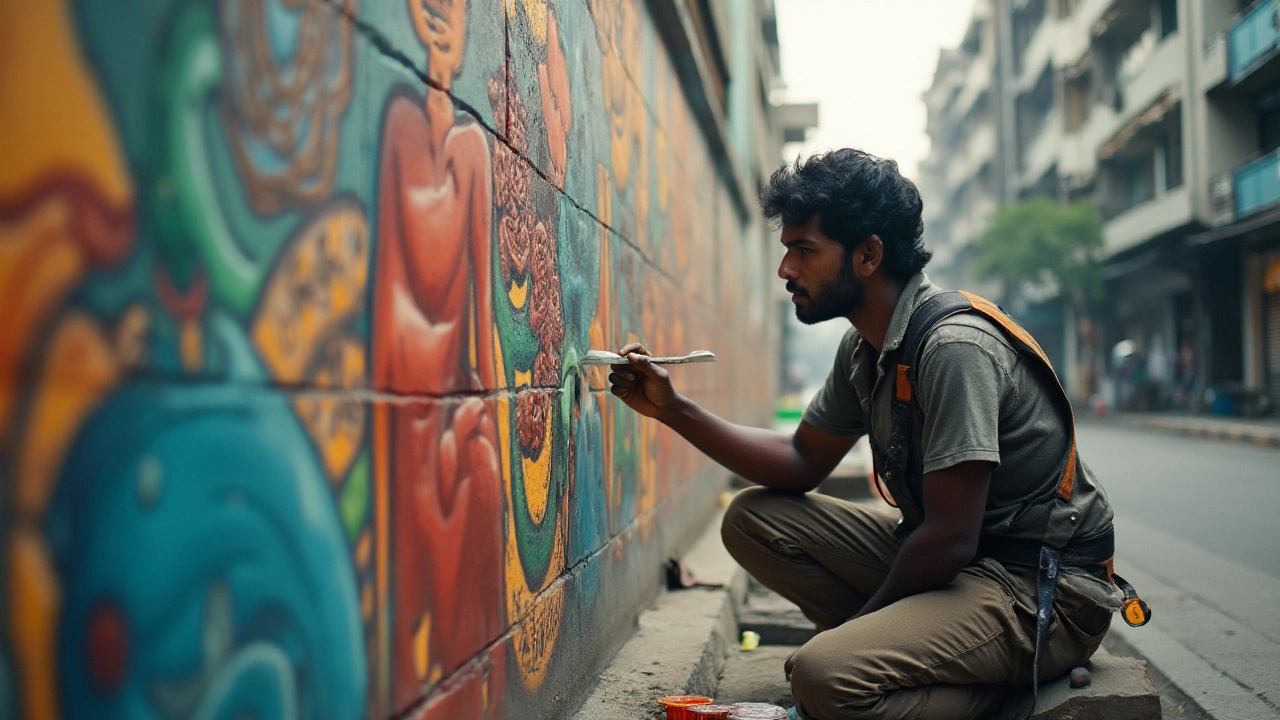
Intersections and Influences
In the expansive realm of the art world, fine art and contemporary art have lived as neighbors occupying the same universe yet often speaking different visual languages. However, the boundaries between these two categories are not as rigid as one might think. The influence of historical art movements can be seen intricately woven into the fabric of today’s contemporary art practices, creating a rich tapestry where the old meets the new in profound and sometimes unexpected ways.
One prominent intersection point is in the reinterpretation of themes. Artists today, driven by the innovations in contemporary society, often draw inspiration from classical art's well-trodden paths. Take, for example, the Renaissance's obsession with humanism and perspective, which has found a new interpretation in contemporary digital art’s exploration of human identity through technology. This blending of periods shows how past explorations shape current directions.
A perfect illustration of these intersections can be found in works that blend the traditional skill with avant-garde perspectives, a method that was poignantly discussed by John Berger in "Ways of Seeing":
"The past is not for living in; it is a well of conclusions from which we draw in order to act."These words highlight how the echoes of the past environments reverberate into contemporary creations, allowing artists to maintain a dialogue across time.
In a different yet equally significant vein, the material choices in contemporary artworks often pay homage to age-old traditions. From the use of oils and canvas to digital mediums, contemporary creators continue to pay tribute to their predecessors, while harnessing new media to express present-day narratives. These artworks reflect on the past yet encapsulate the spirit of the modern age, garnering appreciation from varied audiences.
Then there is the matter of revolutionary art theories that have impacted both the realms of fine art and contemporary art. The development of minimalist aesthetics, which sprung as a reaction to more flamboyant styles, permeates through various art forms to this day. Its implications for art created purely for visual pleasure versus art created as social or political commentary remain a vital consideration for artists and critics alike.
Let's not forget the impactful role of exhibitions and global art showcases such as the Venice Biennale. These platforms not only celebrate contemporary visions but also emphasize the collaborative bond that links artists no matter the era. It's a playground where classical and contemporary artists' legacies meet the present, nurturing a collective consciousness in the art community that celebrates diversity and continuity.
Hence, recognizing these intersections and influences helps us appreciate not just the standalone beauty of each art form but also the continuous evolution that makes art an ever-changing reflection of humanity. This mutual influence nurtures both traditions, propelling them forward into newer dimensions of visual dialogue.
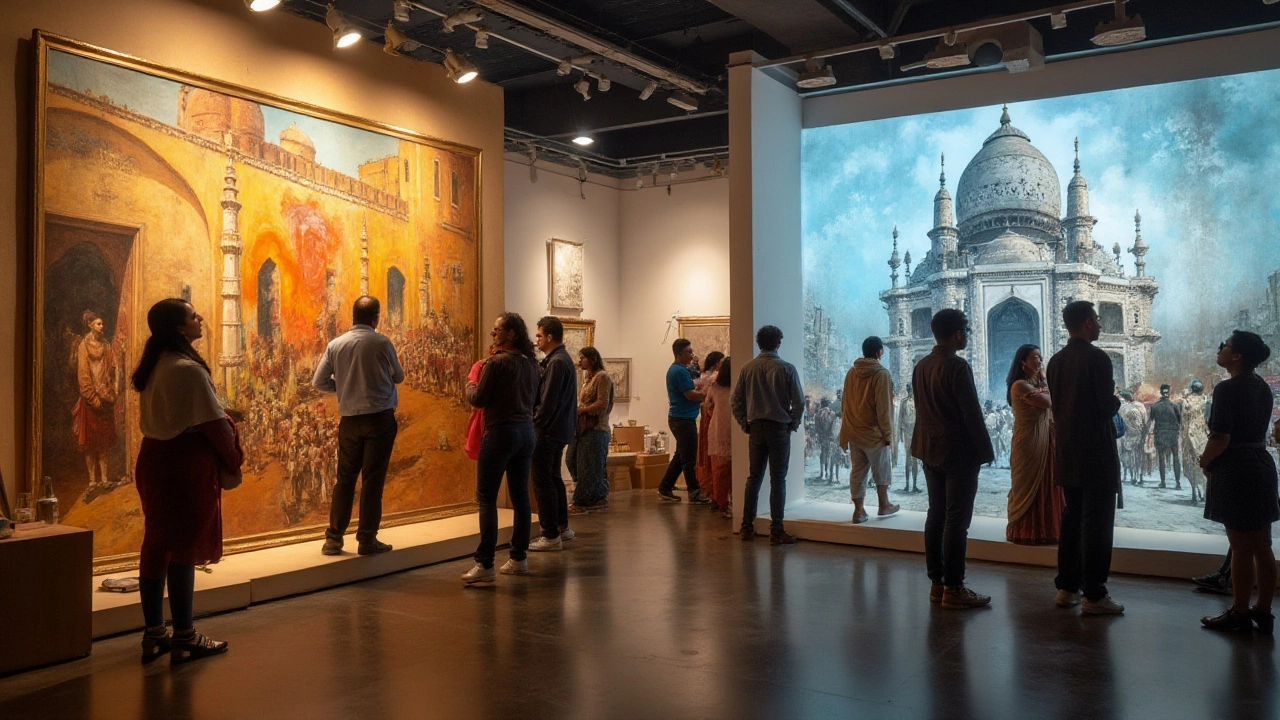
Trends and Innovations in Modern Art
In the vast, ever-evolving world of contemporary art, one of the most fascinating aspects is the way artists continuously push boundaries, creating art styles and practices that are both innovative and reflective of present-day social dynamics. An essential trend in recent years is the use of technology, where virtual reality, digital installations, and holographic displays have begun replacing traditional canvases and studio spaces. Artists are now exploring augmented reality and interactive environments, blurring the lines between the viewer and the artwork itself. It is becoming increasingly common to see exhibitions that rely on immersive experiences, inviting the audience not just to see but to literally step into the art piece.
“The challenge of art is to meet the changes in technology with the same organic, humanistic vision that kept Da Vinci aloft and the Sistine Chapel filled with michelangelesque muse,” observed gallery director Kay Moore.Integration with technology is far from the only trend redefining the landscape. Sustainability has become a central theme, with many artists utilizing reclaimed materials and eco-friendly practices to comment on environmental issues. This shift not only reflects a new consciousness among creatives but also resonates with audiences more aware of ecological impacts. Through this, art transcends mere aesthetic pleasure to advocate for global action.
The resurgence of identity politics in artistic expression has also carved its mark in the modern art scene. Artists today are increasingly vocal about gender, race, and personal identity, making art a crucial platform for social change. Public installations that celebrate marginalized voices, as well as more personal explorations of identity, have become staple elements in major and minor exhibitions alike. Another important trend is the embrace of cross-disciplinary influences that include performing arts, literature, and even science, creating an almost hybrid form of art that challenges traditional fine art classifications. These intersections give rise to unique collaborations that breathe fresh life into how we perceive artistic creativity.
With the rise of NFT art, digital ownership is a concept artists are rapidly embracing. Non-fungible tokens have introduced a revolutionary method for artists to sell their works and set their terms in the marketplace. For example, CryptoPunks and Beeple have highlighted how digital platforms like Ethereum can serve as both a gallery and auction house. This technological leap is democratizing art ownership and allows broader participation while also questioning the very concept of what it means to 'own' art in the digital age. Art differences are ever evident, as traditional collectors grapple with understanding and valuing these digital assets.
Lastly, the global nature of contemporary trends often brings spotlight to non-Western art and artists who draw on rich cultural traditions, contributing to a more inclusive understanding of art. These innovative practices are not merely embellishments in the art world; they signify a profound shift in narrative and engagement, ushering in an unprecedented era where art and crises, technology, and expression, all intersect seamlessly.
